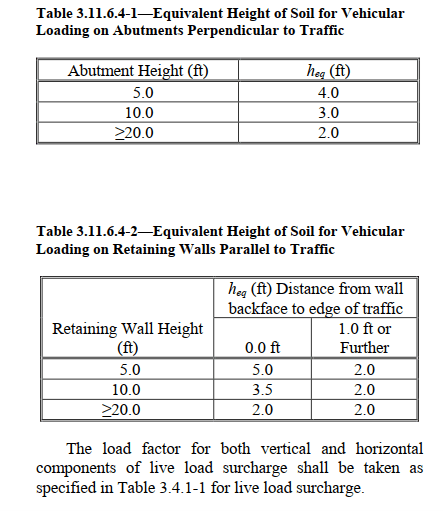I am working on designing a retaining wall adjacent to a 5 story building. I am trying to determine an acceptable surcharge load to use for the retaining wall design.
Does ASCE 7 or IBC provide typical surcharge loads? Is there another technical document that I can find acceptable surcharge load for retaining walls?
Comments/suggestions are appreciated.
Does ASCE 7 or IBC provide typical surcharge loads? Is there another technical document that I can find acceptable surcharge load for retaining walls?
Comments/suggestions are appreciated.

